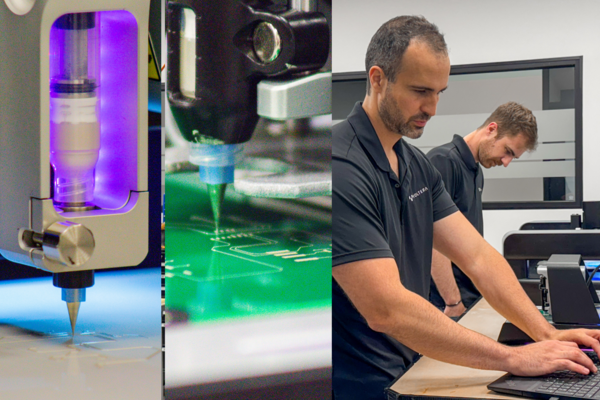
What a wolf pack can teach you about building a startup team
A startup founder - like an alpha wolf - has to learn to follow sometimes when the hunt is on, says Waterloo entrepreneurship lecturer and author

A startup founder - like an alpha wolf - has to learn to follow sometimes when the hunt is on, says Waterloo entrepreneurship lecturer and author
By Heather Bean Marketing and Strategic CommunicationsSo you’ve started a business and you’re growing your team. As a new business leader, you have the opportunity to create an awesome work culture from scratch. You know you don’t want to lead a herd of sheep. Instead, think about assembling a wolf pack.
That’s the suggestion of Marc Hurwitz, co-author of a new book, Leadership is Half the Story: A Fresh Look at Leadership, Followership, and Collaboration. Hurwitz, an entrepreneurship lecturer at the University of Waterloo’s Conrad Business, Entrepreneurship and Technology Centre, encourages startup founders to think like an alpha wolf.
When the hunt is on, the leadership role of the alpha wolf flows through the pack according to the team’s needs and opportunities, says Hurwitz, who co-authored the book with his wife, Samantha Hurwitz. While startup founders need to be effective leaders, they also need to practice excellent followership.
 “The first ten hires can make or break a startup,” says Hurwitz, who also holds a PhD in cognitive neuroscience from the University of Waterloo. "It’s easy for entrepreneurs to be drawn to candidates who share their own leadership qualities. But business founders should also be looking for the strengths of followership in prospective team members. These include creativity, communication skills, and emotional intelligence."
“The first ten hires can make or break a startup,” says Hurwitz, who also holds a PhD in cognitive neuroscience from the University of Waterloo. "It’s easy for entrepreneurs to be drawn to candidates who share their own leadership qualities. But business founders should also be looking for the strengths of followership in prospective team members. These include creativity, communication skills, and emotional intelligence."
Engaged followership, and agile switching between leadership and followership roles, makes the difference between a herd of sheep and a wolf pack. How to nurture followership in your new business? Talk about it in the workplace, and reward excellent followership as well as leadership. “Language is so important,” says Hurwitz. “If you start to have conversations about followership, that changes everything.”
As you build your team, you’re also building a culture. Here are the Hurwitzes’ five principles for building excellent leadership and followership throughout the startup.
No one can lead all of the time. When you aren’t leading, you need to take on an engaged, thoughtful followership role. “Entrepreneurs need to learn to follow, and to foster excellent followership, just as much as they need to lead. To be successful, entrepreneurs need to follow well with investors, with customers and sometimes with their co-founders and teammates. If you want more and better leadership, foster followership.”
Leaders should think beyond delegation to the more reciprocal relationship of framing and creating. Framing, say the Hurwitzes, means defining the goals and resources of a project while staying flexible enough to adjust to opportunities or issues that arise. Creating is the followership role of building within the frame that’s been set.
Two important types of frames are “scouting and settling”—and note that entrepreneurs in particular can have trouble moving into the settling phase. “It’s easy to let new information prevent you from moving forward to the settling frame, which is where you build your minimum viable product,” says Hurwitz. When the frame is in place, leaders need to be clear with themselves and their team about the transition to settling, so their team can start to create.
In a new venture, communication is crucial. Sometimes partners put too much faith in each other, says Hurwitz: “Entrepreneurs hope that their colleagues will be doing the right things, but they don’t check in with each other, and then suddenly someone misses a deadline.” Touch base regularly with your partners and team members. Get to know their work styles to maximize their strengths. Finding the right connection with each team member will foster co-flow.
Startups and new businesses have a natural advantage here: that contagious passion you have for your great idea. The creativity you need to realize it will thrive in a positive environment, says Hurwitz. They remind new leaders that team feedback should be 90 percent positive to 10 percent critical. Help your team members play to their strengths, instead of trying to fix their weaknesses. When you’re in evaluation mode, focus on positives; talk about improvements instead of pointing out failures; and end with a plan to make those improvements happen.
Deeply shared goals are not the same as identical goals, the Hurwitzes say—and one deeply shared goal isn’t enough to sustain your business. Co-entrepreneurs may both have the goal of manufacturing widgets, for example, but if one wants to change the world with her widgets and the other wants to be bought out within five years, they’ll run into problems.
Fortunately, this is the easiest principle to follow. “Have a shared goals audit,” says Hurwitz. Each of you writes down all of your goals—for work-life balance, personal development, workplace culture. Share them with each other, and smooth out potential areas of conflict.

Read more
Voltera prints electronics making prototyping faster and more affordable — accelerating research to market-ready solutions

Read more
From non-invasive health care solutions to sustainable construction material and AI-driven coaching, the funding supports future-centric ventures

Read more
Velocity and Socratica’s builder communities help Waterloo students find their people and build their entrepreneurship side
The University of Waterloo acknowledges that much of our work takes place on the traditional territory of the Neutral, Anishinaabeg, and Haudenosaunee peoples. Our main campus is situated on the Haldimand Tract, the land granted to the Six Nations that includes six miles on each side of the Grand River. Our active work toward reconciliation takes place across our campuses through research, learning, teaching, and community building, and is co-ordinated within the Office of Indigenous Relations.